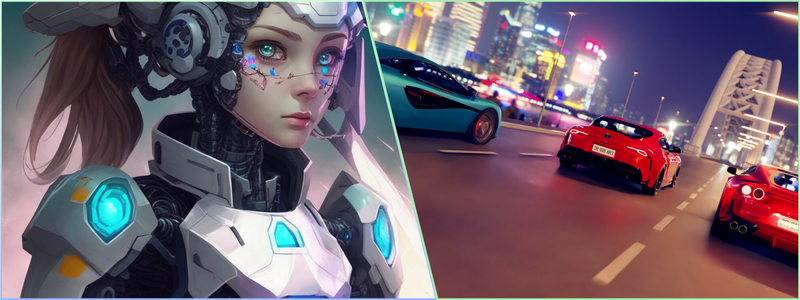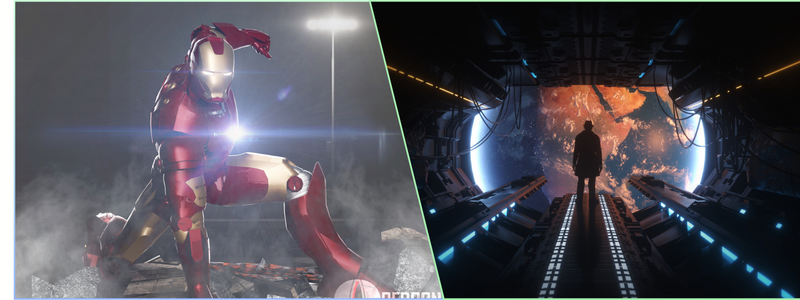This post covers a complete guide to the 3D animation pipeline for businesses and firms. Most people know that creating 3D animation services involve more complexities and aspects than what meets the eye. There is also a significant variation in the number of steps involved in producing 3D animated videos, depending on the scale of the project itself and the chosen animation studio tasked to do the job.
In general, a long list of things requires careful checking, and a big group of expert professionals with specific skill sets and knowledge must also be involved to produce a single 3D animated feature film or video. This complex process requires a comprehensive framework and a solid structure, also known as the 3D animation pipeline. Here is a complete guide to the 3D animation pipeline for your business or firm:
What is a 3D animation pipeline?
The 3D animation pipeline is the system of software, hardware, and people aligned to work in a particular sequential order to perform pre-determined tasks within a pre-determined period that will result in the final 3D animation asset or product. This final product can be a traditional animation like a video game asset, TV show, short film, or feature film. It can also be something completely different. The 3D animation pipeline is similar to an assembly line, but this time, for producing a 3D animated video.
RELATED: How a 3D product animation service can boost your marketing efforts
Importance of a pipeline for 3D animation production
The 3D animation pipeline can be pictured as a creative assembly line that plans everything from conception to final publishing. Two or even five hundred 3D animators can make up the whole pipeline. The most critical point of the 3D animation pipeline is ensuring that each artist knows how, what, and when tasks must be carried out and transferred to the next group of artists or individual artists. The following are the four key reasons why a pipeline is essential for 3D animation production:
- Budget management
While the budgets and costs for 3D animation may vary depending on several factors, a substantial sum of money is often involved and will only be effective if spent in a controlled manner. The return on of many 3D animation projects is estimated before the official start of the production process.
- Standardization and structuring
A carefully planned 3D animation pipeline is the most efficient means of ensuring everyone involved is always on the same page and trying to achieve the same goal. Professional 3D design studios also produce numerous 3D animations for various clients every year. You can easily stand out among the crowd and attract more clients if you ensure that every animation is made with the right amount of quality and precision and provide your clients with the same level of exceptional experience every time.
RELATED: Top reasons for using 3D rendering in the 3D animation process
- Team management
As mentioned earlier, there can be as low as two persons or as many as five hundred artists working on one animation project. These people are often divided into several groups and teams, many of which should work together to ensure the project’s success. The last thing you want is to ignore and take for granted the significance of adequately managing these individuals and teams with different skills and responsibilities.
- Time management
3D animation production, specifically 3D animated series and feature films, is time-consuming and complex. Once accumulated, even the most negligible delays in each step can postpone the entire outcome, resulting in a financially disastrous project because of the domino effect. Each step must have a detailed time frame and plan to coordinate creative lines as needed, some of which are meant to be performed simultaneously.
RELATED: How 3D animation services help architects showcase new properties & buildings
3D animation pipeline: the main components
There are three primary stages in the 3D animation pipeline: pre-production, production, and post-production. Whether the project involves 3D character animation services, or creating architectural animation, these steps are applicable. Based on the resources, outcomes, considerations, and other vital factors regarding the organization, every segment of the 3D animation field uses these three stages differently to some extent, with the main structure remaining intact.

There can also be slight differences in the specifics of the pipeline of every project. But once again, these three main stages stay the same. Below is a quick overview of the 3D animation pipeline used for most projects right now:
1. Pre-production
The pre-production stage involves research, planning, and designing of the 3D project and is divided between two teams. The first is the 3D concept design team creating the idea, designs, and story. The second team is the management team that takes note of the production plan, which includes time frames and budget teams. The production stage will be more straightforward if the pre-production phase is done better.
RELATED: How much does 3D animation cost & rates for product marketing video services?
Pre-production steps
1.1 Idea generation
A brilliant idea marks the beginning of a great story, so there must be a well-thought and solid idea for your animation first.
1.2 Story creation
Story creation involves developing and improving ideas until you shape the whole story. It is the basic version of what will happen in your animation, such as the conflict, characters, and others.
1.3 Scriptwriting
The story’s written, formal, and literary version is called the script, which includes dialogues, actions, time, environment, and character movements.
1.4 Storyboarding
The storyboard is the script’s non-moving visual version. It resembles a comic book with early ideas of scene events, major character poses, or camera staging.
RELATED: A complete guide to using 3D architectural animation services for your company
1.5 Animatic
The animatic is the storyboard’s moving form that will progress into the final edit of the whole project. It is made in the simplest form to portray the project’s sequence timing using storyboard drawings in 2D.
1.6 Design
Design is when you decide on the project’s final look, including the character, prop, concept designs, costumes, and environment. This is also where you should fully covey the design concept and mood.
2. Production
Your earlier efforts should pay off and turn into full-blow action during production. Production is when the 3D animation’s visual elements are handed over to the designated artists and teams. Team leaders ensure that quality and time frames match the set plan during the pre-production phase and flow smoothly. The outcome of the stage shapes the entire 3D animation.
The steps below make up the production stage:
2. 1 3D layout
3D layout is the 2D animatic’s 3D version. It contains basic 3D qualities like the shape and size of the characters, their simple animation, environment, proxy geometry, and the like.
RELATED: Why you should hire a product animation service for your company
2.2 3D modeling
3D modeling involves the development of the geometric surface representation of objects using specialized 3D software.
2.3 3D texturing
3D texturing is when textures, surface properties, and colors are made and applied to the 3D model. 3D models are often in the default shaded flat color before being handed over to the texture artist.
2.4 3D rigging
3D rigging designers add bone structure on the 3D object to allow animators to move its parts efficiently and quickly.
RELATED: What is 3D rigging and how is it used for 3D character animation?
2.5 3D animation
The animation stage involves the creation of movements of the 3D characters or objects in a setting or scene. 3D animation is often the most time-consuming and critical stage of 3D animated video production.

2.6 VFX
The 3D Visual Effects artist will animate almost all but the characters or the specific elements they interact with such as water, cloth, dust, etc.
2.7 Lighting
Lighting is the stage where the 3D rendering expert creates the mood of the 3D sequence or scene using light according to the pre-production designs.
2.8 Rendering
Each scene in a 3D animation is separated and rendered into several layers, including colors, foreground, background, objects, highlights, shadows, etc. The layers will be united once again during compositing in the post-production stage.
RELATED: 9 Steps to create 3D product animation for a company’s marketing campaign
3. Post-production
The final touches to the project will be added at this stage to make it look professional and polished as the project requires. Post-production artists use different tools to develop the appearance of the project.
The 3D animation pipeline’s post-production includes the following steps:
3.1 Compositing
Compositing is when the layers previously rendered are put together once again. This layering process could involve placing a couple of layers together or something more complicated, like matching and adjusting the properties of hundreds of layers.
3.2 2D VFX
Several visual effects like camera shakes, raindrops, sparks, and dust can be achieved more quickly in a 2D environment during the final stage of the project without compromising the quality. The effects are often combined with other layers during compositing in the earlier stage.
RELATED: How does 3D animation help furniture manufacturing companies boost new product sales?
3.3 Color correction
Color correction, also called color grading or color timing, is the final adjustment to the 3D animation. The step gives a consistent look to the whole project and every shot.
3.4 Final output
While there are several options for the 3D animation pipeline’s format output, digital video is the most common type that can be easily played online and is compatible with most digital devices today. An excellent 3D animation pipeline can make a big difference to the success of your business or firm’s 3D project.
How Cad Crowd can assist
Starting a new 3D animation project for your company project can be an intimidating task. There’s plenty to gain by using 3D animation, but there are also a lot of creative decisions to make before the work even begins. It’s best to work with a vetted professional so you can take advantage of their experience and expertise. Fortunately, Cad Crowd can make the whole process easier for you. You can choose from our pool of vetted freelance 3D animation professionals. If you’re ready to take the first step with your new 3D animation project, it’s quick and easy. Start by getting a quote today.
